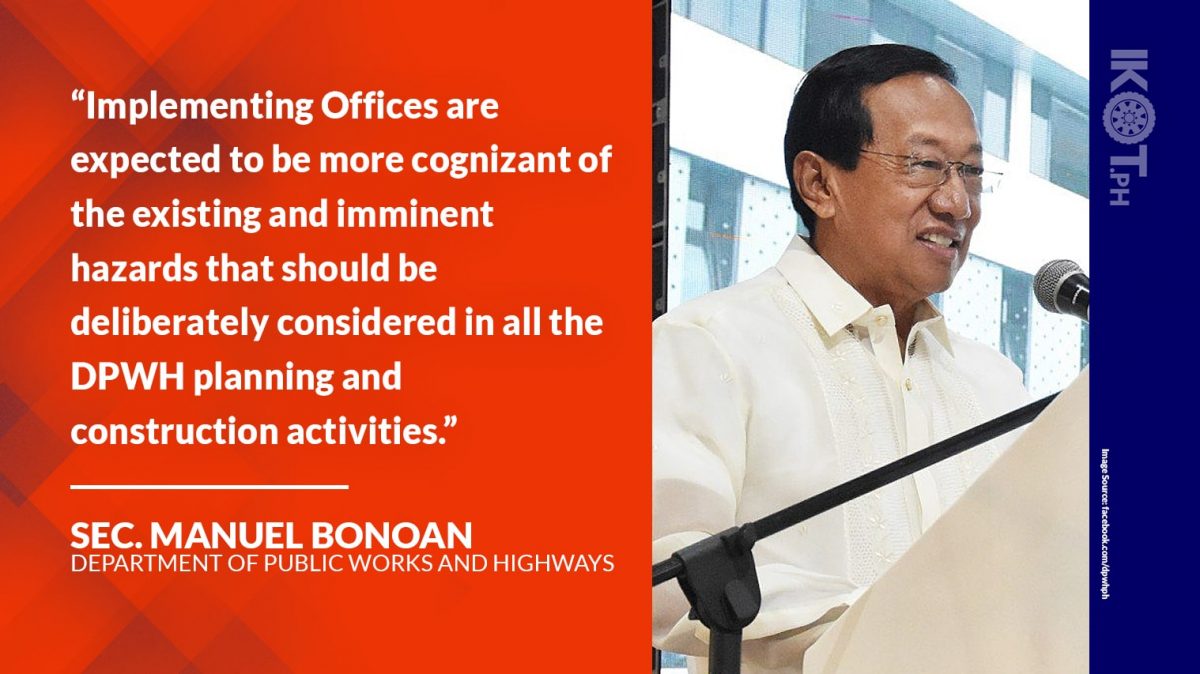All Department of Public Works and Highways (DPWH) offices nationwide were instructed to reassess systems to ensure strict compliance with laws and policies relative to high-hazard areas, no-build zones, and national protected areas in the implementation of infrastructure projects.
In a memorandum, DPWH Secretary Manuel Bonoan ordered all Service Directors, Bureau Directors, Project Directors, Regional Directors, and District Engineers to strictly adhere to laws, in view of the Department’s thrust to implement infrastructure projects that mitigate disaster risk.
“Implementing Offices are expected to be more cognizant of the existing and imminent hazards that should be deliberately considered in all the DPWH planning and construction activities,” Bonoan said.
“DPWH offices shall first and foremost ensure that projects are not located in geo-hazard areas and no build zones identified or certified by the Mines and Geosciences Bureau.”
The public works chief reiterated that DPWH offices shall first and foremost ensure that projects are not located in geo-hazard areas and that no build zones are identified or certified by the Mines and Geosciences Bureau.
The standards of construction, rehabilitation, improvement or repair of all infrastructure projects in all areas and zones shall be consistent with the rules determined by the DPWH, considering among others, the structural strength and climate and disaster resilience required for infrastructure projects in all areas and zones.
“All projects carried out within the National Integrated Protected Area System are implemented in coordination with the DENR.”
DPWH shall also guarantee that all projects carried out within the National Integrated Protected Area System are implemented in coordination with the Department of Environment and Natural Resources (DENR) and in a manner that eliminates or reduces the risk of biodiversity loss.
Furthermore, ecosystem functions and services such as drainage, aquifer recharge, heat island effect, analysis of population dynamics which would engender the requirements of solid waste and wastewater management, and the need for softscape and vegetative cover shall be taken into consideration in all public infrastructure projects.
These considerations shall be incorporated into the project Environmental Impact Assessments (EIAs) and commitments to protect these services shall be included in the project contracts.
Finally, a certificate of non-coverage or an Environmental Compliance Certificate (ECC) is required prior to the commencement of government infrastructure projects covered by the Philippine Environmental Impact Statement System.


